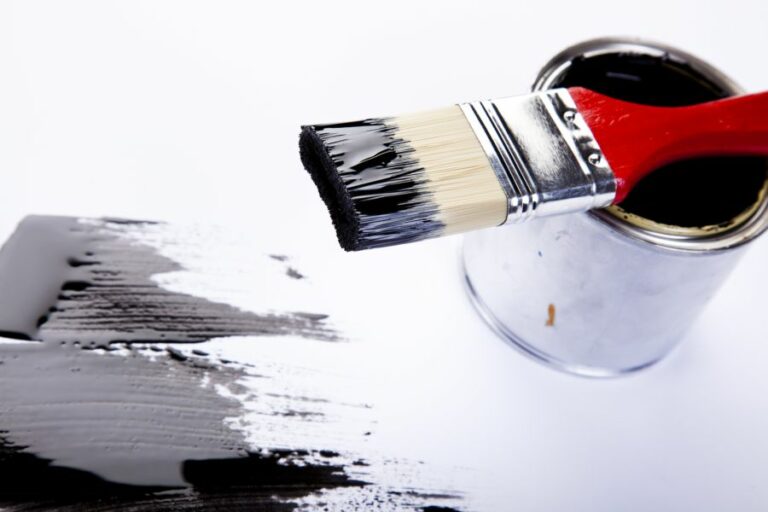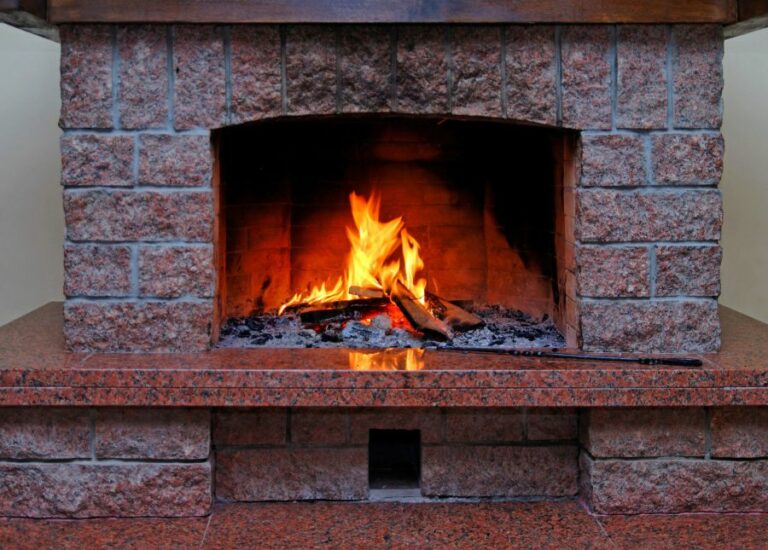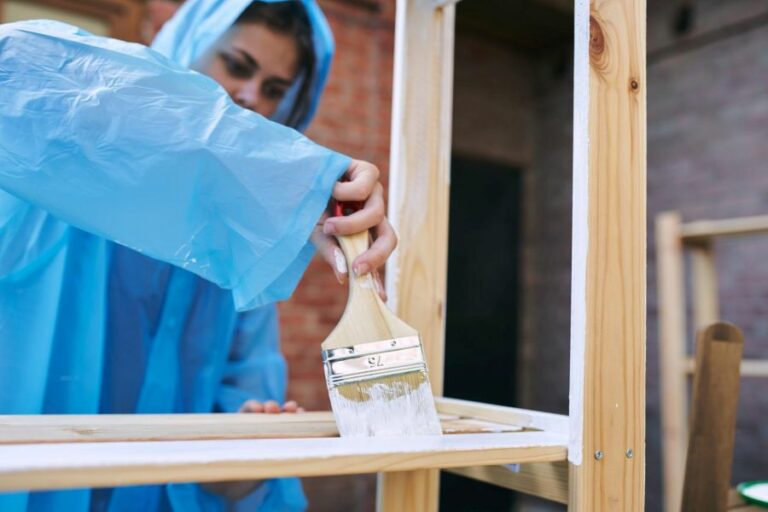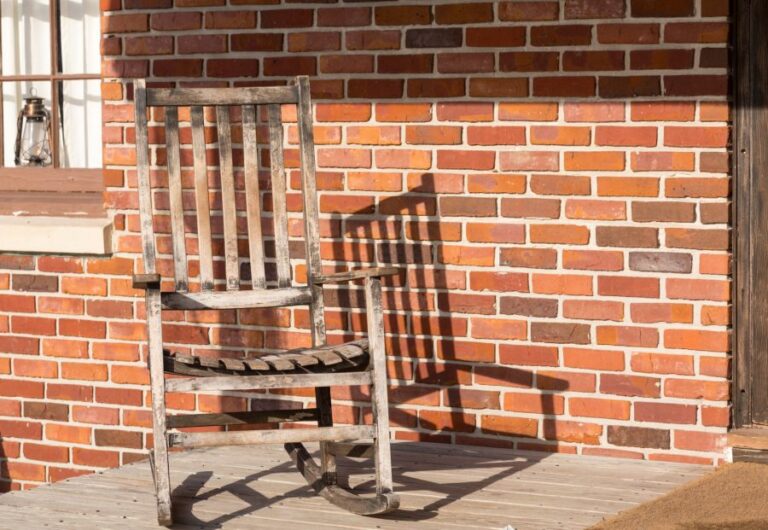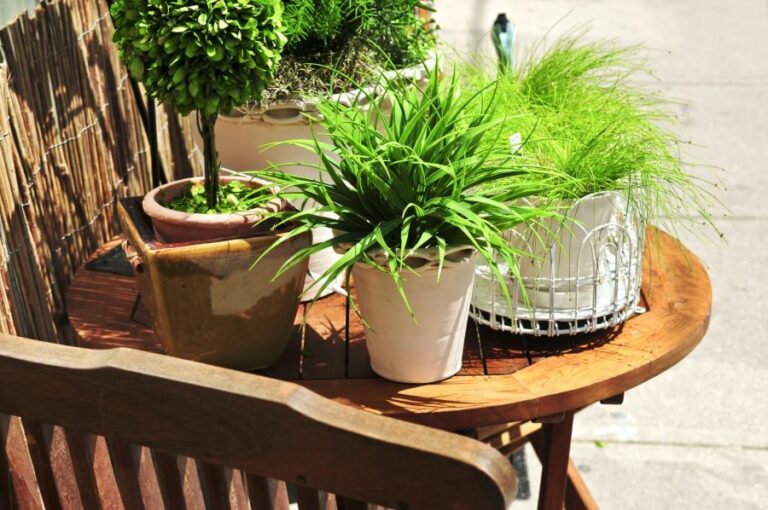Can I Use Outdoor Paint Indoors, 25 Things You Should Know
Are you considering repurposing leftover outdoor paint for your interior walls? Before you start, it’s crucial to understand the differences between indoor and outdoor paint. Discover essential information that will empower you to make informed decisions and create a safe, beautiful living space.
Can I use outdoor paint indoors:
While outdoor paint can technically be used indoors, it is not recommended due to the potential health risks from higher volatile organic compound (VOC) levels, incompatibility with indoor surfaces, compromised aesthetics, and higher cost. Indoor paints are designed to provide a cleaner, healthier environment with lower VOCs, a variety of finishes, and suitable durability for interior spaces. To ensure a healthy, beautiful, and long-lasting result, it is best to choose paint specifically designed for indoor applications and follow best practices.

Discover the potential dangers of using outdoor paint indoors and why proper ventilation is crucial. Learn about the key differences between indoor and outdoor paint types, including environmental and health impacts. Make informed decisions for your home painting projects by continuing.
Contents
- 1 Is it Suitable to Utilize Outdoor Paint for Indoor Applications?
- 2 Reasons to Avoid Using Exterior Paint for Interior Applications
- 3 What are the distinctions between indoor paint and outdoor paint?
- 4 Is it Possible to Utilize Benjamin Moore Exterior Paint for Interior Applications?
- 5 Is it Suitable to Utilize Porch and Patio Paint for Indoor Applications?
- 6 Is it Possible to Utilize Paint that Has Been Stored Outdoors?
- 7 Is It Possible to Utilize Exterior Primer for Interior Applications?
Is it Suitable to Utilize Outdoor Paint for Indoor Applications?
• Understanding the Differences between Indoor and Outdoor Paints
Before diving into whether outdoor paint can be used indoors, it’s essential to comprehend the key differences between the two types of paint. The main disparities are found in the ingredients used, the durability of the paint, and the finish they provide.
– Ingredients in Indoor and Outdoor Paints
Indoor paints are designed to be low in Volatile Organic Compounds (VOCs) while providing a uniform finish. They have a smooth application process and offer quick drying times, resulting in a cleaner and healthier indoor environment.
Outdoor paints, on the other hand, are designed to withstand extreme weather conditions and UV exposure. They generally contain higher levels of VOCs, additional binders, and protective additives that offer resistance against weather, moisture, mold, and mildew.
This makes outdoor paints more suited for exterior surfaces.
– Durability of Indoor and Outdoor Paints
As mentioned earlier, outdoor paints are designed to be highly durable due to their exposure to harsh elements. They have a higher resistance to fading, chipping, and peeling when compared to indoor paints, which are more vulnerable to wear and tear and require reapplication after some years.
– Finish of Indoor and Outdoor Paints
Indoor paints offer a variety of finishes, such as flat, eggshell, satin, semi-gloss, and high-gloss. Each finish provides a different level of sheen and is chosen based on the desired aesthetic and functionality of the space.
Outdoor paints typically contain a higher gloss and sheen to provide better resistance against the elements. Additionally, the increased glossiness allows for easier cleaning and maintenance of exterior surfaces.
• Can You Use Outdoor Paint Indoors?
Technically, outdoor paint can be used indoors; however, it is not recommended due to several key factors that may negatively impact the indoor environment, the paint’s longevity, and the overall appearance of the space. Some of the primary reasons are outlined below.
– Health Risks Associated with High VOC Content
Outdoor paints contain higher levels of VOCs than indoor paints, which can lead to poor indoor air quality and potential health complications. High VOC levels are linked to a host of symptoms, such as headaches, dizziness, and respiratory issues.
Since indoor spaces generally have less ventilation, using outdoor paint indoors can exacerbate these health risks for the occupants.
– Incompatibility with Indoor Surfaces
The additional binders and additives in outdoor paints make them more suited for outdoor surfaces like wood, metal, or stucco. Indoor surfaces, on the other hand, may not provide the needed compatibility or adhesion for outdoor paints.
This can lead to poor paint performance, such as wrinkling, bubbling, or peeling over time.
– Aesthetics
Outdoor paints are designed to have higher gloss levels, which may not be suitable for interior spaces. The sheen and finish may not align with the desired aesthetic, and reapplication might be necessary to achieve a more pleasing appearance.
– Cost
Outdoor paints often carry a higher price tag due to their increased durability and weather-resistant additives. Using outdoor paint indoors may not be a budget-friendly choice, especially if the paint’s performance or appearance is subpar and requires reapplication.
• Best Practices When Choosing Paint for Indoor Spaces
To ensure a healthy, beautiful, and long-lasting result, it is best to choose paint specifically designed for indoor applications. Here are some considerations when selecting paint for your interior spaces:
- Opt for low or zero-VOC paints to minimize the risk of adverse health effects.
- Choose a paint finish that is suitable for the space and aligns with your aesthetic preferences.
- Consider the expected wear and tear in specific areas of the house. For example, high-traffic areas may require paint with higher durability or washability, such as semi-gloss or high-gloss finishes.
- Always follow the manufacturer’s instructions for proper surface preparation, application, and drying times to ensure optimum results.
- Seek professional advice or assistance if unsure about the type of paint or finish best suited for your project.
• Conclusion
While outdoor paint can be used indoors, it is not advised due to potential health risks, incompatibility with indoor surfaces, compromised aesthetics, and increased cost.
By choosing an appropriate indoor paint and following best practices, you can ensure a healthier, more visually appealing, and long-lasting finish for your interior spaces.
Reasons to Avoid Using Exterior Paint for Interior Applications
Exterior paints and interior paints may share some common components, but they are formulated differently to serve varying purposes. Using the wrong type of paint can lead to a host of problems, from minor, aesthetic issues to serious health concerns.
• What Makes Exterior Paints Different From Interior Paints?
Exterior paints are specifically designed to withstand the elements and protect the surfaces they coat. To do this, they typically contain additives and chemicals that provide resistance to sunlight, moisture, and temperature fluctuations.
These additives may include heavy metals or volatile organic compounds (VOCs) to ensure long-lasting durability and color retention. On the other hand, interior paints prioritize low-VOC content and easier to clean finishes, as they are intended for use in living spaces.
– Chemical Composition and Safety Issues
One of the main reasons not to use exterior paint inside is its high VOC content. VOCs are harmful organic chemicals that become airborne as gases, which are emitted by many products, including, but not limited to, paints.
VOCs can cause headaches, dizziness, eye and respiratory irritation, and in some cases, even more severe health problems.
Interior paints are formulated with lower VOC levels to ensure better indoor air quality. Prioritizing low or zero-VOC interior paints is important to maintain a healthy living environment.
Using exterior paint inside can lead to poor air quality and pose health risks, especially for people with chemical sensitivities, allergies, or respiratory issues, such as asthma.
– Durability Concerns and Surface Compatibility
While exterior coatings boast durability, they may also be less flexible than interior paints. Inside the home, they may crack, peel or chip over time as walls expand and contract due to temperature changes or structural settling.
Exterior paints are formulated to adhere to rough and porous surfaces, such as wood and concrete. They may not bond effectively to smooth surfaces like drywall, resulting in poor adhesion and eventual paint failure.
On the other hand, interior paints are designed to work well with typical indoor materials like plaster, drywall, metal, and wood, ensuring better long-term performance and appearance.
– Finish Considerations and Practicality
Exterior paints tend to have a more limited range of finishes compared to interior paints, with flat and satin finishes being the most common. Indoor spaces often demand glossier finish options, such as semi-gloss or high-gloss, for easy cleanup, moisture resistance, and aesthetic variety.
In addition, interior paints are formulated to provide better coverage, which may translate to cost savings in terms of the square footage that a single can of paint can cover. Exterior paints are designed to provide protection rather than coverage, so they may not be as cost-effective when used indoors.
• The Importance of Proper Paint Selection and Application
To ensure the best results and benefits, choosing the right paint for the job is crucial.
– Reading Labels and Understanding Application Guidelines
Always read the labels and instructions provided by the paint manufacturer. These guidelines will indicate which surfaces the paint is suitable for and any necessary preparation steps or application techniques. They will also specify if the paint is for interior or exterior use.
– Choosing High-Quality Paint Products
Investing in high-quality paint products will save you time and money in the long run and ensure a more enjoyable painting experience and a finished result that meets your expectations.
While it may be tempting to cut costs by choosing cheaper paints or disregarding proper application methods, doing so may lead to dissatisfactory results or even the need for a complete repaint.
– Considering Professional Advice or Assistance
If you are unsure about the best paint for your project or feel inexperienced with paint application techniques, consult home improvement professionals or consider hiring a qualified painter to ensure the job is done correctly.
• Conclusion
While it may seem that exterior and interior paints merely differ in name, they are formulated with specific purposes, surfaces, and environments in mind.
Using exterior paint inside can result in various issues, including potential health concerns, inadequate surface bonding, unsightly appearances, and decreased durability.
By selecting the appropriate paint for each project and following manufacturer guidelines, you can achieve a successful, long-lasting result while maintaining a safe and healthy home environment.
What are the distinctions between indoor paint and outdoor paint?
When it comes to selecting the right paint for your home or office, it’s essential to understand the crucial differences between indoor paint and outdoor paint. These differences impact not only the appearance of the painted surfaces but also their durability, longevity, and overall performance.
• Composition and Ingredients
– Indoor Paints
Indoor paints are designed to be used on interior surfaces like walls, ceilings, and trim. They are primarily water-based, making them easy to clean up and relatively low in odor. The primary ingredients in indoor paint are:
- Pigments, which provide the color
- Resins, which bind the paint to the surface
- Solvents, which thin the paint to an easily-applied consistency
- Additives, which provide specific properties like mildew resistance and improved flow
Water-based indoor paints, also known as latex or acrylic paints, are generally preferred over oil-based paints for their ease of use, quick drying time, and lower levels of harmful volatile organic compounds (VOCs).
– Outdoor Paints
Outdoor paints, also called exterior paints, are formulated to withstand the harsh elements of weather and sunlight. They must resist fading, peeling, and cracking while maintaining their color and adhesion.
The main ingredients in outdoor paint are similar to those in indoor paint, but the ratio and types of these ingredients differ to provide the needed durability for outdoor use.
Most outdoor paints are water-based but with higher resins and additives for better adhesion and resistance to moisture, mildew, and ultraviolet (UV) rays. Although less common, exterior oil-based paints provide exceptional durability and are suitable for certain surfaces like metals and wood.
• Finish and Durability
– Indoor Paint Finish
Indoor paint finishes usually come in four options:
- Matte or flat: This finish has the least amount of sheen and is perfect for hiding imperfections on walls and ceilings. However, cleaning can be challenging and may not be suitable for high-traffic areas.
- Eggshell: Slightly more sheen than a matte finish, this option is easier to clean and offers moderate durability, making it suitable for living rooms and bedrooms.
- Satin: With a slightly glossy appearance, the satin finish is durable and easy to clean, making it appropriate for children’s rooms, kitchens, and bathrooms.
- Semi-gloss and gloss: These finishes have a high sheen, are very durable, and are easy to clean. They’re ideal for painting doors, windows, and trim.
– Outdoor Paint Finish
Outdoor paints come in similar finishes but with slightly more sheen to provide better resistance to the elements:
- Flat: This finish is ideal for hiding surface imperfections but offers limited durability compared to other outdoor finishes.
- Satin: A good balance of sheen and durability, satin finish is suitable for most exterior surfaces.
- Semi-gloss and gloss: Highly durable and easy to clean, these finishes are perfect for outdoor surfaces that require frequent cleanings, like door and window frames.
• Performance Factors
– Indoor Paint Performance
Indoor paints are primarily designed for aesthetic purposes and to withstand daily wear and tear. They are generally resistant to mildew growth but not as much as outdoor paint.
Indoor paint does not hold up well against UV rays, so selecting curtains or blinds that protect your painted surfaces from direct sunlight is essential.
– Outdoor Paint Performance
Outdoor paints are designed to handle harsh weather, sunlight, and temperature fluctuations. They are more resistant to moisture infiltration, UV radiation, and mildew growth, all essential for outdoor surfaces.
The longevity of an outdoor paint job is significantly influenced by the quality of the paint and proper surface preparation.
• Recommendations from Personal Experience
When choosing between indoor and outdoor paint, I recommend thoroughly assessing the surface you intend to paint and considering the conditions it will face. For interior surfaces, prioritize factors like durability, cleaning ease, and finish preference.
Focus on moisture resistance, UV protection, and long-lasting adhesion for exterior surfaces.
Always invest in high-quality paint from a reputable brand, as it will have a significant impact on the appearance and longevity of your paint job. Finally, proper surface preparation is crucial, so make sure to clean, repair, sand, and prime as needed before applying the paint for optimum results.
Features | Indoor Paint | Outdoor Paint |
|---|---|---|
Chemical Composition | Formulated with less wear resistance, lower VOCs (volatile organic compounds), and fewer additives. | Contains additional additives like UV protection, and mildew and mold inhibiting agents; higher wear resistance; may have higher VOCs. |
Durability | Less durable as it’s mainly designed to withstand regular cleaning and light wear and tear. | More durable, formulated to withstand harsh weather conditions, moisture, temperature fluctuations, and UV rays. |
Application | Used primarily for interiors, such as walls, ceilings, and trim, where exposure to weather is minimal. | Used on exterior surfaces like siding, doors, and outdoor furniture, providing a weather-resistant barrier. |
Finish | Various finishes are available, including flat, eggshell, satin, semi-gloss, and gloss, depending on the desired aesthetics. | Usually available in satin, semi-gloss, and gloss finishes to provide durability and protection for exterior surfaces. |
Is it Possible to Utilize Benjamin Moore Exterior Paint for Interior Applications?
As an experienced paint professional, I often get asked about whether exterior paints can be used for interior applications. In particular, many people inquire about the popular Benjamin Moore exterior paint products.
• Understanding the Differences between Exterior and Interior Paints
To determine whether Benjamin Moore exterior paint can be used inside, it’s essential to understand the fundamental differences between exterior and interior paints.
– Composition and Formulation
Exterior paints are specifically formulated to withstand harsh weather conditions, such as sun exposure, rain, and temperature fluctuations. They typically contain higher levels of resin and pigments, providing a thicker, more durable coating that can expand and contract with varying temperatures.
In contrast, interior paints are designed to provide a smooth finish and better color retention over time. They do not have the same durability and weather resistance requirements as exterior paints, potentially leading to issues if used interchangeably.
– VOC Levels
Volatile Organic Compounds (VOCs) are chemicals emitted by paints and other substances as they dry. Exterior paints often contain higher levels of VOCs as they are intended for outdoor use, where the compounds can dissipate into the air more easily.
In indoor environments, higher VOC levels may result in stronger paint odors and increased health concerns, particularly for those with allergies, asthma, or chemical sensitivities.
• The Possible Risks of Using Benjamin Moore Exterior Paint Inside
Using Benjamin Moore exterior paint indoors is not recommended due to several potential issues and risks.
– Inconsistent Finish and Performance
As mentioned earlier, exterior paints are designed to be more weather-resistant, resulting in a thicker and potentially less refined finish than interior paints. If used indoors, this could lead to an uneven or unattractive appearance that may not meet your desired aesthetic.
Additionally, exterior paint might not adhere as effectively to indoor surfaces, potentially leading to premature peeling, chipping, or other forms of wear.
– Health Concerns
Higher VOC levels in exterior paints may contribute to increased indoor air pollution and related health risks. Potential health effects of VOC exposure include headaches, dizziness, respiratory issues, and eye, nose, or throat irritation.
Long-term exposure to high levels of VOCs may even be linked to an increased risk of developing certain cancers.
– Potential for Mold or Mildew Growth
Exterior paints are designed to resist water damage and contain additives to prevent mold and mildew growth on outdoor surfaces. However, these additives might not provide the same level of protection when used indoors, particularly in areas with high humidity or poor ventilation.
This could result in mold or mildew growth, additional health concerns, and potential surface damage.
• Recommendations for Using Exterior Paint Indoors
Although it is generally not advisable to use Benjamin Moore exterior paint inside, there are a few situations where it might be justifiable. If you decide to proceed, consider the following tips and recommendations:
– Ventilate the Area
Ensure that the area is well-ventilated during painting and drying to help mitigate potential health risks associated with VOC exposure. Open windows and doors, use fans, and take breaks to allow fresh air circulation.
– Test a Small Area First
Before committing to painting an entire room or surface with exterior paint, test a small, inconspicuous area first. This will allow you to observe potential adhesion, finish, or odor issues.
– Select a Low-VOC Exterior Paint
Opt for a Benjamin Moore exterior paint with low VOC levels or a formulation specifically designed for indoor use if possible. This can help minimize the potential health impacts associated with higher VOC levels.
– Consult a Professional
If unsure about the best course of action, consult a paint professional or a Benjamin Moore representative. They can provide guidance and recommendations to help you achieve your desired results without compromising safety or quality.
• Conclusion
While it may be tempting to use Benjamin Moore exterior paint indoors for specific reasons or situations, doing so can result in several potential complications, including inconsistent finish or performance, health concerns related to VOC exposure, and potential mold or mildew growth.
As a paint professional, I recommend sticking to interior paints for indoor use and consulting with a professional if you have any concerns.
Is it Suitable to Utilize Porch and Patio Paint for Indoor Applications?
Porch and patio paint is specially designed for outdoor surfaces, providing excellent resistance to weathering, UV rays, and wear and tear caused by foot traffic. While it is primarily meant for exterior use, we can still explore the possibility of using it indoors.
• Characteristics of Porch and Patio Paint
Before discussing whether or not it is suitable for indoor use, let’s understand the attributes of porch and patio paint:
– Durability and Resistance
One of the most important characteristics of porch and patio paint is its durability. It is specially formulated to withstand harsh outdoor elements like temperature fluctuations, sun exposure, and moisture. The paint also has a strong resistance against chipping, cracking, and peeling.
– Non-Slip Finish
Since porches and patios tend to get wet, the paint is often designed to have a non-slip finish. This is particularly useful for preventing accidents caused by slippery surfaces.
– Protective Coating
Porch and patio paints have a built-in protective coating that helps to prevent mold and mildew growth, ensuring that outdoor surfaces stay clean and free of harmful infestations.
– Quick Drying Time
These paints are formulated to dry quickly, enabling the surface to be usable in a shorter amount of time, which is particularly important for outdoor spaces.
• Pros of Using Porch and Patio Paint Indoors
Given the above characteristics, one may wonder if porch and patio paint could be beneficial indoors. Here are some of the potential advantages:
– High Durability
Using porch and patio paint indoors can offer high durability and resistance to wear and tear, particularly in high-traffic areas prone to scuff marks and scratches.
– Easy Maintenance
The protective coating that prevents mold and mildew growth on outdoor surfaces may also provide similar benefits indoors, making it easier to clean and maintain.
– Non-slip Finish
Using porch and patio paint in areas that tend to get wet indoors, like bathrooms or laundry rooms, could provide a non-slip finish, improving safety.
• Cons of Using Porch and Patio Paint Indoors
Although there are potential benefits to using porch and patio paint indoors, there are certain drawbacks that must be considered:
– Potentially Harsh Chemicals
Porch and patio paint may contain more chemicals than indoor paint, which could release fumes and pollutants that may worsen indoor air quality. This may lead to health concerns, especially for individuals with respiratory issues like asthma.
– Limited Color Choices
Compared to general-purpose indoor paints, porch and patio paints typically have a limited color palette, which could restrict your interior design options.
– Inadequate Performance
Despite their durability, porch and patio paints may not provide the same finish quality as indoor paints when applied on interior surfaces.
• Precautions While Using Porch and Patio Paint Indoors
If you have considered the pros and cons and still decided to use porch and patio paint indoors, follow these precautions:
– Proper Ventilation
During and after application, ensure proper ventilation to avoid inhaling harmful fumes. Open windows and doors, and use exhaust fans to help mitigate the fumes.
– Use Low-VOC Paints
Choose low-VOC (volatile organic compound) porch and patio paints to minimize potential indoor air quality issues.
– Test on a Small Area
Before fully committing to the paint, test it on a small, inconspicuous area to verify its performance and appearance on the intended indoor surface.
– Follow the Manufacturer’s Instructions
Carefully follow the manufacturer’s instructions for the best results, and keep in mind that some warranties may not cover the paint’s use indoors or on unintended surfaces.
• Conclusion
While porch and patio paint has been specifically designed for outdoor usage, it may still provide certain advantages when used indoors.
However, it’s essential to weigh the potential benefits against the drawbacks, taking into consideration the type of surface you wish to paint and your aesthetic preferences. If you decide to proceed with it, follow the precautions mentioned above to ensure the best outcome for your home interior.
Is it Possible to Utilize Paint that Has Been Stored Outdoors?
Painting is a common home improvement project, and many people find themselves with leftover paint that they want to store for later use. But what if that paint has been sitting outside for a while? Can you still use it?
• Factors Affecting the Quality of Paint Stored Outside
There are several factors that can affect the quality of paint that has been stored outside, including:
– Temperature fluctuations
Extreme temperatures and fluctuations can significantly impact the quality of paint. Paint is typically designed to be stored and used within a certain temperature range, usually between 60-80 degrees Fahrenheit (15-27 degrees Celsius).
Storing paint outside during hot summer days or freezing winter nights can cause it to break down, separate, or even solidify, making it unusable.
– Direct sunlight exposure
Prolonged exposure to direct sunlight can cause the paint to degrade due to the breakdown of certain compounds in the paint. This can lead to color fading, reduced adhesion, and decreased durability.
– Moisture exposure
Moisture and humidity are common factors that can impact the quality of paint, especially when it comes to water-based paints. High humidity can cause condensation and moisture to seep into the paint can, potentially leading to mold, mildew, or other contamination that can affect the paint’s performance.
– Dirt and debris
When the paint is stored outside, it can be exposed to dirt, dust, and debris that may contaminate the paint. These contaminants can have negative effects on the paint’s overall appearance and adhesion, leading to a less-than-perfect paint job.
– Proper storage
Another factor that can greatly affect the quality of paint that has been stored outside is the manner in which it was stored. It’s essential to ensure that the paint can is properly sealed, with the lid tightly in place and undamaged, to prevent air, moisture, and contaminants from getting inside.
• How to Check If Your Outdoor-Stored Paint Is Still Usable
Before attempting to use paint that has been stored outside, it’s important to check if it is still in good condition. Here are some steps you can follow to determine if your paint is still usable:
- Inspect the paint can: Check the paint can for any signs of damage, such as rust, dents, or punctures. A compromised can allow air, moisture, or contaminants to affect the paint’s quality.
- Open the can and check for signs of separation or solidification: If the paint has separated, with liquid on top and solid pigment on the bottom, try mixing it with a paint stir stick. If it mixes back together smoothly, it is likely still usable. However, if the paint is solid, lumpy, or has a foul smell, it is likely no longer suitable for use.
- Perform a test patch: To understand better how the paint will perform, apply a small test patch to a piece of scrap wood or cardboard. Allow it to dry, and evaluate the results. If the paint has poor adhesion or an uneven finish, it may be best to purchase new paint.
• Proper Paint Storage Tips
To maximize the lifespan of your paint and ensure it remains in good condition for future use, follow these storage tips:
- Store paint in a cool, dry, and temperature-controlled environment. Avoid areas exposed to direct sunlight or extreme temperature fluctuations. Basements, garages, and utility rooms are typically suitable options.
- Keep the paint can properly sealed. Wipe away any excess paint from the rim of the can and ensure the lid is tightly fitted. For added protection, you can also store the paint can upside down to create an airtight seal with the paint itself.
- Label your paint cans, including information such as the brand, color, finish, and date of purchase. This will make it easier to identify the paint when it’s time to use it again.
- Periodically check on your stored paint to ensure it remains in good condition. Proper storage can significantly extend the usable life of paint, but it’s still important to examine it before using it later down the road.
In conclusion, determining whether paint that has been stored outside is still usable depends on various factors, such as temperature exposure, moisture levels, storage conditions, and overall paint quality.
By following proper storage practices and regularly checking on your paint, you can ensure that it remains in good condition for future use. However, if you find that your paint has been compromised, it’s best to purchase new paint for optimal results.
Is It Possible to Utilize Exterior Primer for Interior Applications?
Numerous types of primers are available in the market, and it’s essential to understand their differences. Homeowners often wonder if they can use an exterior primer inside their homes.
• The Purpose of Primers
Before diving into whether or not exterior primers can be used inside, it’s important to understand the purpose of primers in general. A primer is a preparatory coating for a surface before painting. It serves several functions:
- Adhesion: A primer ensures that the paint adheres properly to the surface.
- Sealing: Primers seal porous surfaces such as wood and concrete, providing a smooth, even base for painting.
- Stain blocking: Some primers contain stain-blocking properties that prevent stains from bleeding through the paint.
- Smoother finish: Primers fill small cracks, holes, and surface imperfections, giving a smoother finish to the final paint job.
• Exterior Primers vs. Interior Primers
Now that we have a general understanding of primers, let’s examine the differences between exterior and interior primers.
– Exterior Primers
Exterior primers are formulated to withstand harsh weather conditions and protect surfaces against UV rays, rain, and temperature fluctuations. Some exterior primers are also designed to combat mold and mildew growth.
These primers generally have a more robust and durable handling of moisture, sunlight, and temperature extremes.
– Interior Primers
Interior primers are specifically crafted for indoor use. They are designed to perform well in stable, climate-controlled environments.
These primers focus more on covering and sealing stains and odors, providing a smoother surface for the final paint layer. Interior primers also emit fewer volatile organic compounds (VOCs), making them a safer option for indoor use.
• The Verdict: Can You Use Exterior Primer Inside?
In short, it is not recommended to use exterior primer inside due to various reasons. Here are some key factors:
– VOC Levels
One significant concern with using exterior primer inside is the higher levels of VOCs present in the formula. These compounds can cause headaches, dizziness, respiratory issues, and even long-term health problems.
Indoor air quality is critical to maintaining, and using an exterior primer indoors could potentially harm the occupants of the space.
– Performance Shortcomings
Exterior primers are not designed to effectively provide stain-blocking or odor-sealing properties as interior primers. Using exterior primer inside could lead to subpar results, as stains or odors may bleed through the paint, requiring additional coats or remedial action.
– Aesthetic Issues
Exterior primers are more prone to having a less smooth finish compared to their interior counterparts. This can lead to a less-than-desirable final appearance after painting. Moreover, the exterior primer might not blend well with interior paint, leading to an uneven or blotchy appearance.
– Cost Concerns
Exterior primers are typically more expensive than interior primers due to their specialized formulas designed to withstand harsh outdoor conditions. Using exterior primer indoors may result in unnecessary overspending on a product not tailored to meet the requirements of an indoor space.
• Recommendations for Priming Indoors
To achieve the best results, follow these recommendations when priming and painting interiors:
- Choose the correct primer: Ensure that you choose an interior-specific primer, taking into consideration the specific needs of your space (stain-blocking, sealing odors, etc.).
- Inspect and prepare the surface: Properly clean and repair any defects in the surface before applying primer. This ensures good adhesion and an even finish.
- Ventilate the space: Open windows and use fans during the priming and painting process to maintain airflow and minimize exposure to VOCs.
- Follow the manufacturer’s instructions: Use the primer and paint according to the specific guidelines provided by the manufacturer for optimal results.
In conclusion, while using an exterior primer inside may be possible, it is not recommended due to potential health hazards, performance issues, and aesthetic concerns.
When priming indoor surfaces, it’s best to choose an interior primer that meets the specific needs of your space to ensure a safe, professional, and long-lasting result.

